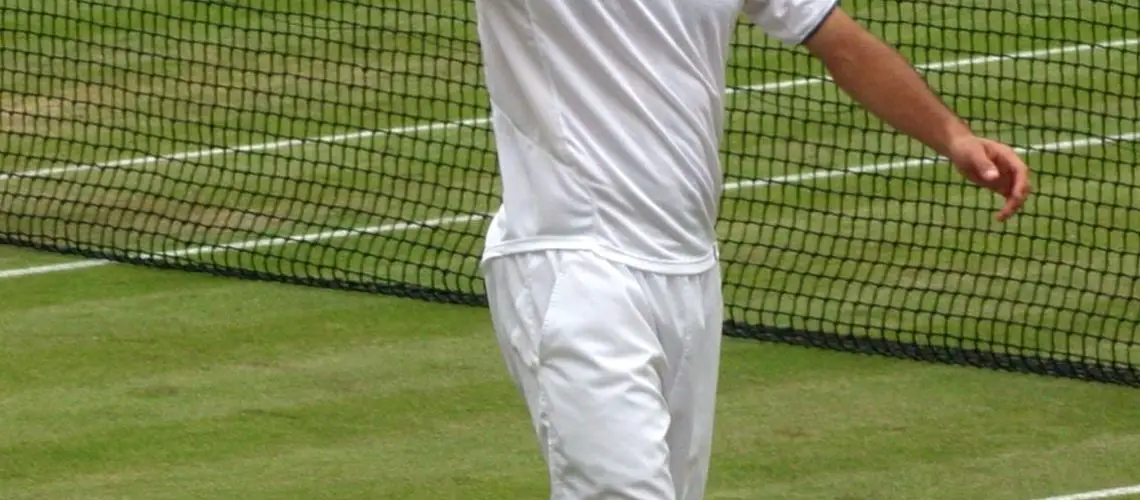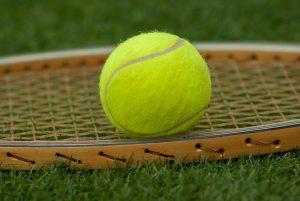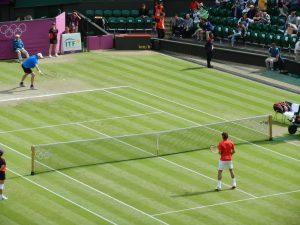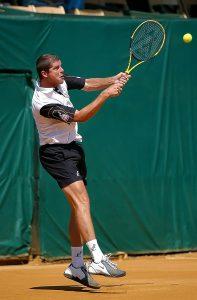We may earn money or products from the companies mentioned in this post.
How to Win Tennis Matches: Developing a Winning Mindset

When it comes to tennis, having a winning mindset is just as important as physical skill Building mental toughness is key to achieving success on the court It involves embracing pressure situations, staying focused and present during matches, and practicing positive self-talk and visualization techniques
Building Mental Toughness
In order to become mentally tough in tennis, you need to learn how to embrace pressure situations Instead of letting nerves get the best of you, see these moments as opportunities for growth and improvement By facing challenges head-on, you’ll develop resilience and the ability to perform under pressure
Staying focused and present during a match is another crucial aspect of mental toughness It’s easy to get distracted by external factors or your own thoughts, but maintaining focus on the present moment allows you to make better decisions and execute your shots with precision
Practicing positive self-talk and visualization techniques can also greatly enhance your mental game By replacing negative thoughts with positive affirmations and visualizing successful outcomes, you’ll boost your confidence and belief in your abilities
Establishing Pre-Match Routines and Rituals
To set yourself up for success before each match, establishing pre-match routines and rituals is essential Warming up effectively helps prepare your body for optimal performance by increasing blood flow, loosening muscles, and improving coordination
In addition to physical warm-ups, setting achievable goals for each match or tournament can help keep you motivated and focused throughout the competition These goals should be specific, measurable, attainable, relevant, and time-bound (SMART), allowing you to track your progress and stay on track towards victory
Understanding Your Opponent’s Weaknesses and Strengths
One of the keys to winning tennis matches is understanding your opponent’s weaknesses and strengths By researching their previous matches and tactics, you can gain valuable insights into their playing style and tendencies
Armed with this knowledge, you can adapt your strategy accordingly For example, if your opponent has a weak backhand, you can focus on targeting that area during rallies Understanding their strengths also allows you to anticipate their moves and adjust your gameplay to counteract them effectively
In conclusion, developing a winning mindset in tennis requires building mental toughness, establishing pre-match routines and rituals, and understanding your opponent’s weaknesses and strengths By implementing these strategies, you’ll be well-equipped to achieve success on the court
Mastering essential tennis skills and techniques for success on the court

When it comes to tennis, mastering the fundamentals is crucial for achieving success on the court Whether you’re a beginner or an experienced player looking to improve your game, focusing on key areas such as serving and groundstrokes can make a significant difference in your performance Let’s dive into some essential techniques that can take your tennis skills to the next level
Improving the serve
The serve is arguably one of the most important shots in tennis To enhance your serving abilities, it’s essential to work on consistent ball toss and perfecting body mechanics
-
Consistent ball toss:
A repeatable ball toss location sets the foundation for a successful serve By consistently tossing the ball at the same spot, you gain better control over accuracy and timing It allows you to position yourself correctly and execute various serve techniques effectively -
Perfecting body mechanics:
Serving with proper body mechanics maximizes power and spin potential Syncing your legs, hips, shoulders, and arm together creates a fluid motion that generates greater racket head speed upon impact Additionally, focusing on a smooth follow-through ensures optimal transfer of energy from your body to the ball
Excelling at groundstrokes
In addition to serving, excelling at groundstrokes is vital for dominating rallies during matches Two key groundstroke techniques worth honing are forehand and backhand
-
Forehand technique tips:
Generating topspin through racket head acceleration adds depth and control to your forehand shots Mastering footwork enables you to position yourself well and maintain balance while executing powerful strokes The combination of proper technique and footwork allows you to hit accurate shots consistently -
Backhand technique tips:
One-handed or two-handed, the backhand is a shot that requires solid technique Understanding the advantages and disadvantages of each grip can help you choose the most suitable option for your game Driving through the ball with your backhand stroke generates increased pace, making it harder for opponents to counter your shots
By focusing on these essential tennis skills and techniques, you’ll be well on your way to improving your overall performance on the court Remember, practice makes perfect, so dedicate time to refine these skills and watch as your game reaches new heights
Strategizing for successful match play: Tactics that lead to victory

When it comes to match play, having a solid strategy can make all the difference between winning and losing One effective tactic is playing aggressively from the baseline This involves applying pressure on your opponent by hitting deep, penetrating shots that force them into defensive positions By dictating the pace and direction of the game, you can keep your opponent on their toes and create opportunities to take control of the point
Another key aspect of aggressive baseline play is looking for opportunities to approach the net When you see a chance, don’t hesitate to move forward and put pressure on your opponent with your volleying skills Approaching the net not only allows you to finish points off quickly but also disrupts your opponent’s rhythm and forces them out of their comfort zone
If you’re looking for a different style of play, adopting a serve-and-volley strategy can be highly effective The key here is consistently placing strong serves with good placement, making it difficult for your opponent to return effectively By following up with aggressive volleys at the net, you’ll put your opponent under immense pressure and give yourself numerous opportunities to win points outright
Adapting to different surfaces and conditions is crucial in maximizing your chances of success on every court Each surface has its own characteristics that impact how the ball bounces and moves Understanding these differences will help you adjust your game plan accordingly For example, grass courts are faster, requiring quick reflexes and precision shots, while clay courts are slower but offer more bounce Hard courts provide a balance between speed and consistency
In addition to surface-specific considerations, weather factors such as wind or heat can also have a significant impact on gameplay It’s essential to stay adaptable during matches by adjusting your tactics based on prevailing conditions For instance, on a windy day, you may need to employ flatter shots and focus on keeping the ball low to minimize the effect of gusts Similarly, in extreme heat, conserving energy and staying hydrated become vital elements of your game plan
Maximizing Physical Fitness and Nutrition for Peak Performance in Tennis Matches

Tennis is a fast-paced and physically demanding sport that requires athletes to be at the top of their game To achieve peak performance on the court, it is crucial to design a tennis-specific fitness program that addresses the unique physical demands of the sport
Designing a Tennis-Specific Fitness Program
Incorporating a variety of exercises into your fitness routine is essential for improving overall performance in tennis This includes cardio exercises to enhance endurance, strength training to build power, and flexibility exercises to improve range of motion
Additionally, focusing on-court footwork drills can significantly improve movement efficiency during matches By practicing agility and quickness on the court, players can react faster to opponents’ shots and cover more ground effectively
Nutrition Guidelines for Optimal Energy Levels During Matches
Nutrition plays a crucial role in providing the body with the energy it needs to perform at its best during matches It’s important to maintain a well-balanced diet that includes carbohydrates, proteins, and fats in appropriate proportions
Carbohydrates are the primary source of fuel for intense physical activity like tennis Including complex carbohydrates such as whole grains, fruits, and vegetables can provide sustained energy throughout matches
Proteins are essential for muscle repair and recovery Lean sources of protein like chicken, fish, beans, or tofu should be incorporated into meals or snacks after matches to aid in muscle recovery
Fats also play a vital role in providing energy during prolonged exercise bouts Choosing healthy fats from sources like avocados, nuts, seeds, or olive oil will support overall performance on the court
In addition to proper nutrition choices, staying hydrated throughout matches is crucial Drinking enough fluids before, during, and after play will help maintain optimal energy levels and prevent dehydration
By following a tennis-specific fitness program and adhering to proper nutrition guidelines, athletes can maximize their physical fitness and nutritional intake, leading to peak performance on the tennis court
Useful Links

10 Great On-Court Tips to Help You Win Tennis Matches
How to Win a Tennis Match Against a Better Player
Tennis scoring, explained: A guide to understanding the …
How to Win a Tennis Tournament – wikiHow Fitness
5 tips to win a tennis match against a lower-ranked opponent
13 Singles Tennis Strategy Tips to Help You Win More …
Tennis scoring explained
#5 Ready to Win? 15 Tips to Help You & Your Team …
Aggressive Patience – the essential strategy for winning …
US Open 101: a USOpen.org guide to how tennis works.
Closing Out Matches – Jeff Greenwald
The Tennis Scoring System
Tennis Doubles Strategy: A Complete Guide
How To Play Tennis | Rules of Sport
WINNING UGLY – BRAD GILBERT Smart Tennis is a …
Big Points in Tennis Matches – The Mental and Tactical …
Tennis Singles Strategy: 8 Tactics to Help You Win!
101 Tips for Winning More Tennis Matches: Michael Kosta






